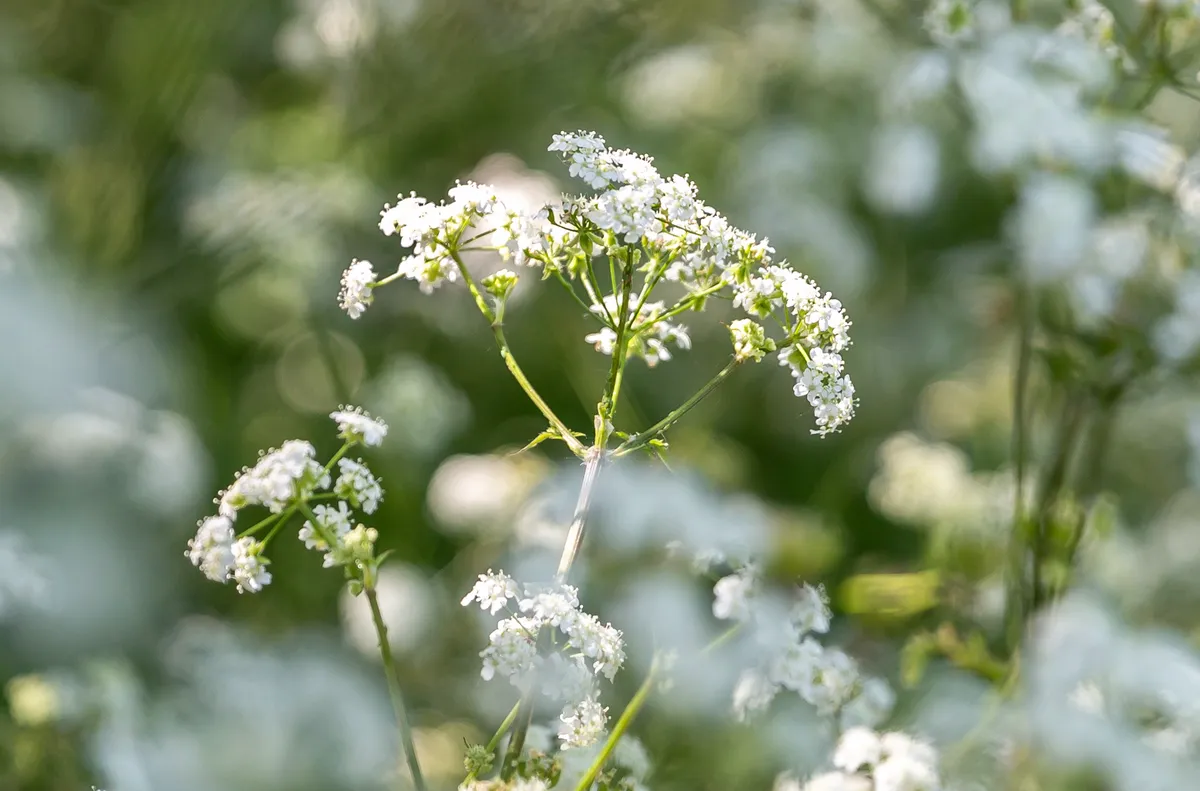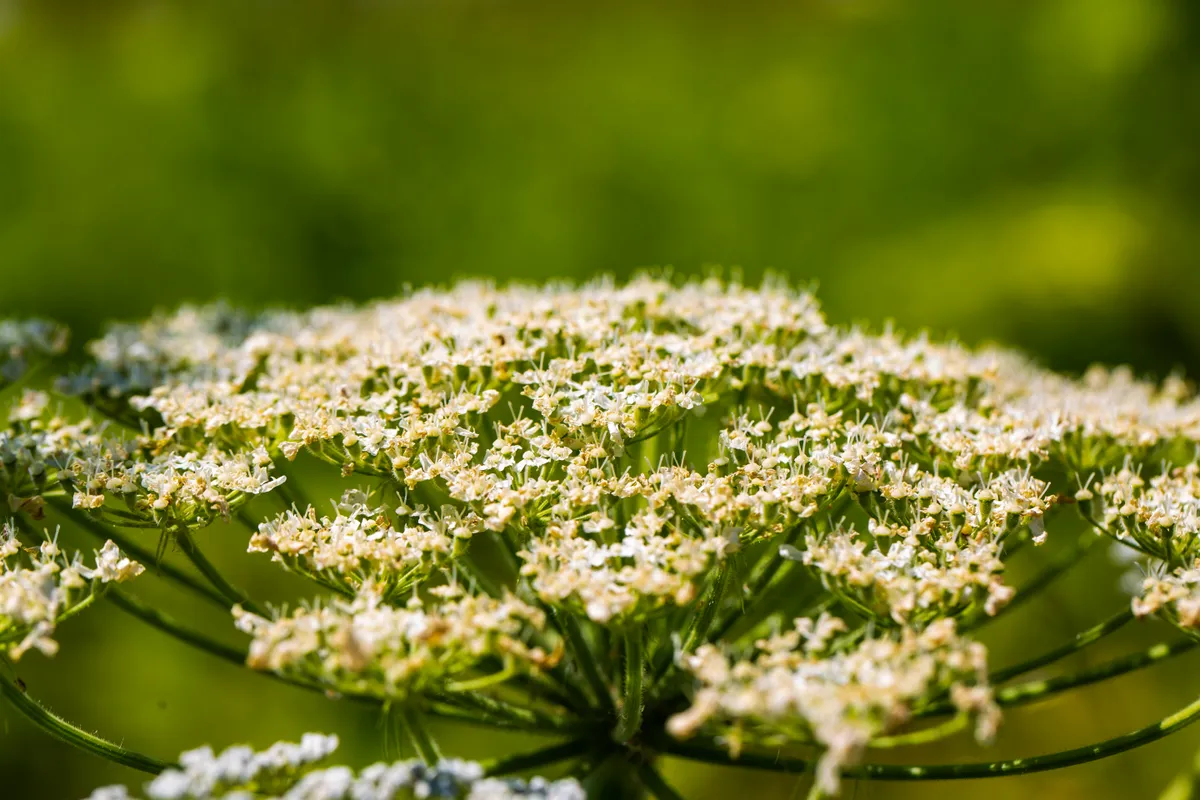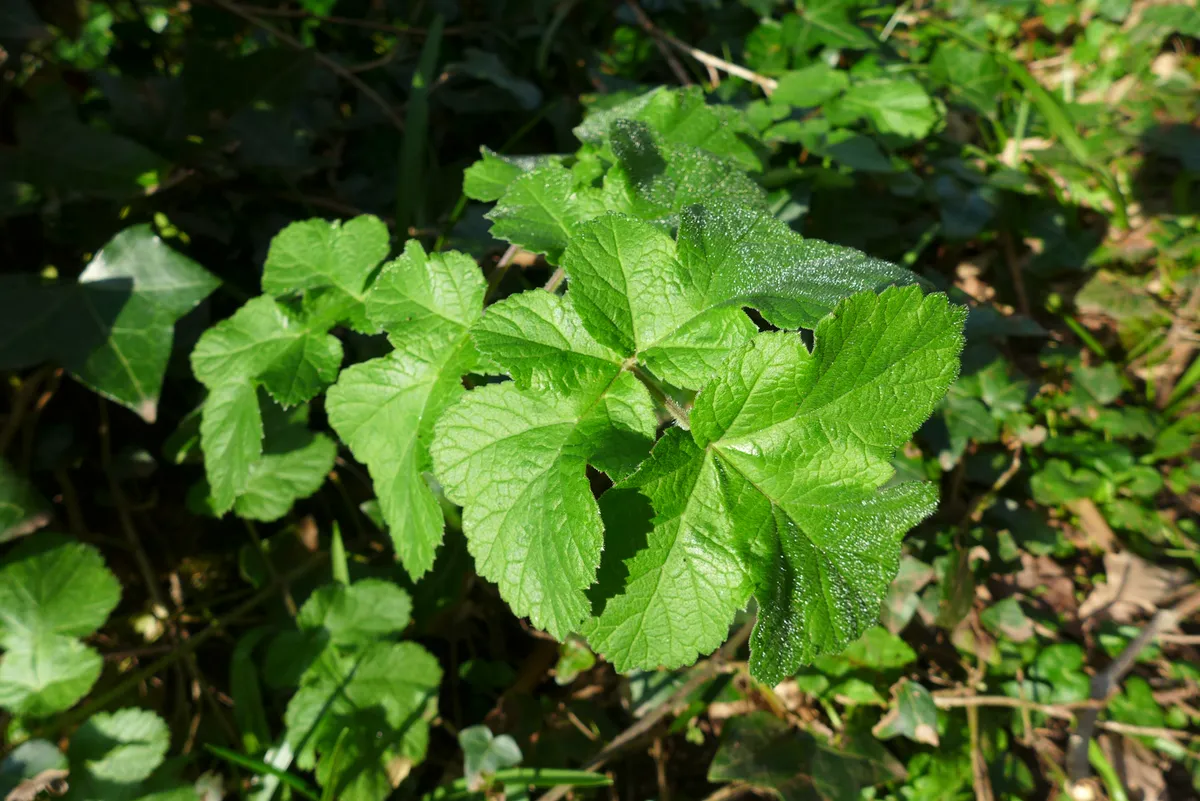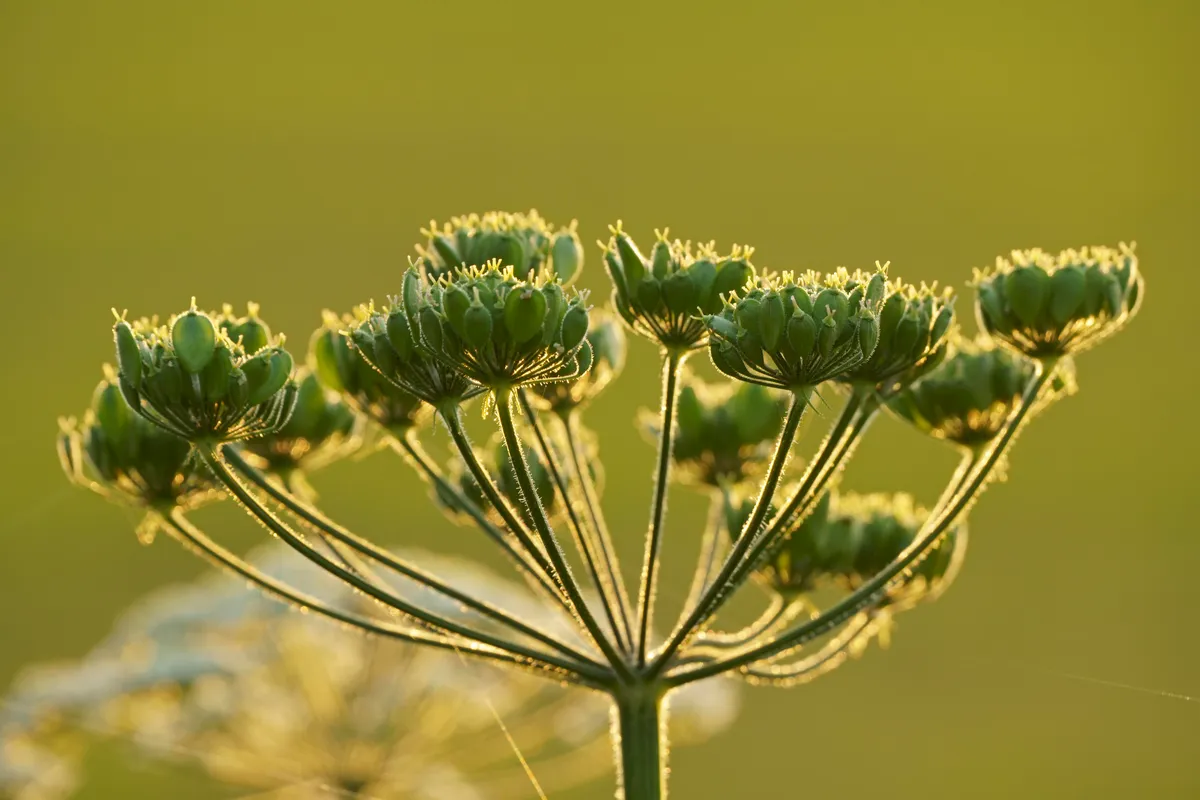No sooner has the cow parsley vanished from our hedgerows and verges, than a similar, though larger, relative often appears in its place.
Hogweed (Heracleum sphondylium) is one of several umbellifers that appear through the summer months, although its size alone sets it apart from most.
Learn how to identify hogweed using its leaves and flowers with our species guide.
- Interested in learning more about Britain's flora? Check out our guides to orchids, bluebells and ferns.
Umbellifers of Britain
What is an umbellifer? What is the difference between cow parsley and hemlock? Is giant hogweed dangerous? Find out the answers to all these questions and more with our guide to umbellifers.

What does hogweed look like?
Hogweed grows tall, as high as two metres, and the stems are similar in appearance to cow parsley, but thicker and more robust, with coarse and conspicuous hairs.
The umbels consist of more rays than cow parsley, as many as 45, while the white flowers sometimes carry a slightly pinkish tinge and can vary in size across the same plant.

The common name comes, unsurprisingly, from an association with pigs, as it was often collected in the summer months to be used as swine food.
A colloquial name for hogweed is limperscrimps or limpenskrimps, for which the etymology is uncertain but may be linked to the tradition of lighting small bundles of dried stems to use as torches.

Is hogweed dangerous?
Hogweed is native to Britain and not dangerous to humans. However, caution should still be taken when touching the plant as it closely resembles several other, poisonous umbellifers such as giant hogweed and hemlock.
Foraging hogweed
The fresh ‘spears’ of young hogweed, comprising the partly formed flowers tightly packed into the sheath of leaves, are popular with foragers and said to have a similar taste to asparagus or broccoli.
The seeds, when dried, may be used as a spice while the pickled stems and leaves are sometimes used to create borscht.
In some Eastern European cultures, hogweed is regarded as an aphrodisiac and might be used as a natural remedy for impotence and infertility.

To children, however (and some grown-up children), the dried stems of hogweed are multi-functional. The whole stem can be thrown like a javelin, while short sections, being hollow, can make excellent pea-shooters.
Their buoyancy also makes for potentially race-winning Pooh-sticks, although care should be taken as invertebrates often hide inside the stems and wouldn’t appreciate an impromptu dunking.

